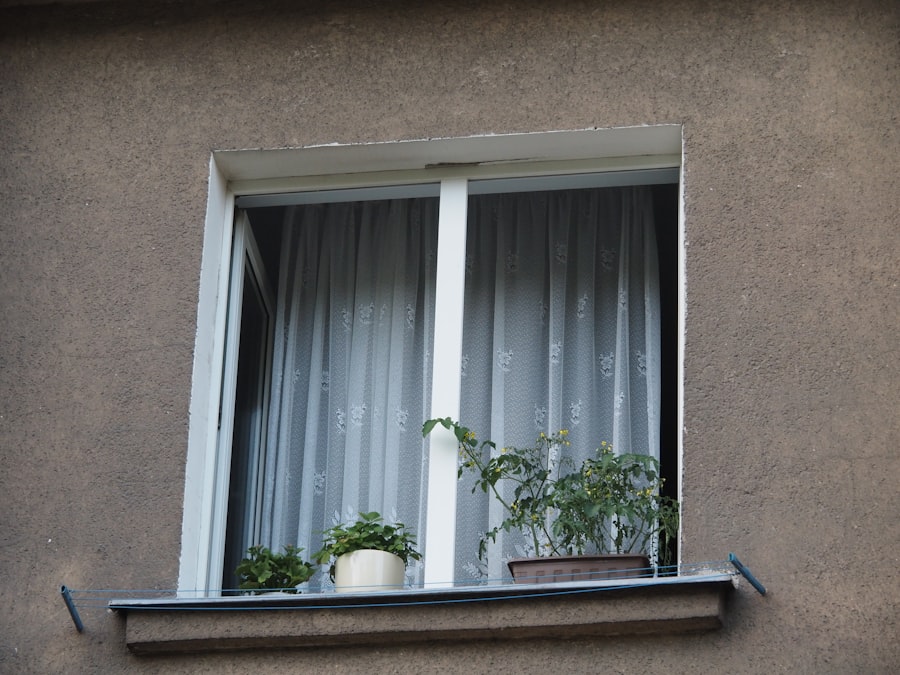In a world that constantly demands your attention, the concept of single tasking has emerged as a powerful antidote to the chaos of multitasking. Single task windows refer to dedicated periods during which you focus solely on one task, free from distractions and interruptions. This approach allows you to immerse yourself fully in your work, leading to enhanced productivity and a greater sense of accomplishment.
As you navigate through your daily responsibilities, understanding the principles of single tasking can transform the way you approach your tasks, ultimately leading to a more fulfilling and efficient work experience. The rise of technology has made it all too easy to juggle multiple tasks at once. Notifications from emails, social media, and instant messaging can create a whirlwind of distractions that pull your attention in various directions.
However, by embracing single task windows, you can reclaim your focus and harness the power of concentrated effort. This article will explore the benefits of single tasking, provide practical tips for implementation, and discuss how you can create an environment conducive to this focused approach.
Key Takeaways
- Single task windows are a method of time management that involves focusing on one task at a time, without any distractions or interruptions.
- The benefits of single tasking include improved productivity, reduced stress, and better quality of work.
- Single task windows improve focus by allowing individuals to dedicate their full attention to one task, leading to better concentration and efficiency.
- Setting up single task windows involves creating a designated time and space for each task, eliminating distractions, and prioritizing tasks based on importance and urgency.
- Tools and apps for single tasking include time management apps, website blockers, and productivity trackers, which can help individuals stay focused and organized.
Benefits of Single Tasking
One of the most significant advantages of single tasking is the boost it provides to your overall productivity. When you concentrate on one task at a time, you can complete it more efficiently and with higher quality. This focused approach minimizes the cognitive load that comes with switching between tasks, allowing your brain to operate at its optimal capacity.
As a result, you may find that you accomplish more in less time, freeing up space in your schedule for other important activities. Additionally, single tasking can lead to improved mental well-being. The constant pressure to multitask can create feelings of stress and overwhelm, as you struggle to keep up with competing demands.
By dedicating specific windows for single tasks, you can alleviate this pressure and cultivate a sense of calm. This focused approach not only enhances your productivity but also contributes to a more balanced and satisfying work life. You may find that you feel more accomplished at the end of the day, as each completed task adds to your sense of progress.
How Single Task Windows Improve Focus

Single task windows are designed to enhance your focus by creating an environment where distractions are minimized. When you commit to working on one task at a time, you allow yourself to dive deep into the subject matter without the constant interruptions that often accompany multitasking. This deep focus enables you to engage with your work on a more profound level, leading to better problem-solving and creativity.
Moreover, single tasking encourages mindfulness in your work habits. By being present in the moment and fully engaged with the task at hand, you can develop a greater awareness of your thought processes and work patterns. This heightened awareness can help you identify areas for improvement and refine your approach over time.
As you practice single tasking, you’ll likely notice an increase in your ability to concentrate for extended periods, which can be incredibly beneficial in both professional and personal contexts.
Tips for Setting Up Single Task Windows
| Task | Tips |
|---|---|
| Minimize Distractions | Find a quiet and organized space to work in. |
| Set Clear Goals | Define specific tasks and objectives for each window. |
| Time Management | Allocate specific time slots for each task. |
| Use Productivity Tools | Utilize apps or software to track and manage your tasks. |
To effectively implement single task windows into your routine, start by identifying specific time blocks during which you can dedicate yourself entirely to one task. Consider using techniques such as the Pomodoro Technique, where you work for 25 minutes followed by a 5-minute break. This structured approach not only helps maintain focus but also provides regular intervals for rest and rejuvenation.
Creating a conducive environment is also crucial for successful single tasking. Ensure that your workspace is organized and free from distractions. Turn off notifications on your devices and consider using apps that block distracting websites during your designated work periods.
By setting clear boundaries around your time and space, you can create an atmosphere that fosters concentration and productivity.
Tools and Apps for Single Tasking
In today’s digital age, numerous tools and applications can support your single tasking efforts. Task management apps like Todoist or Trello allow you to organize your tasks effectively, helping you prioritize what needs to be accomplished during each single task window. These tools can serve as visual reminders of what you need to focus on, reducing the mental clutter that often accompanies multitasking.
Additionally, consider using focus-enhancing apps such as Forest or Focus@Will. These applications are designed to help you maintain concentration by providing ambient sounds or gamifying the process of staying focused. By integrating these tools into your workflow, you can create a more structured approach to single tasking that aligns with your personal preferences and work style.
Creating a Single Task Environment

Establishing a single task environment goes beyond just organizing your physical space; it also involves cultivating a mindset conducive to focus. Start by setting clear intentions for each single task window. Before diving into your work, take a moment to reflect on what you aim to achieve during that period.
This clarity will help guide your efforts and keep you aligned with your goals. In addition to mental preparation, consider incorporating rituals that signal the start of a focused work session. This could be as simple as brewing a cup of tea or taking a few deep breaths before beginning.
By creating an environment that supports single tasking both physically and mentally, you’ll be better equipped to maintain concentration and productivity.
Overcoming Multitasking Habits
Breaking free from multitasking habits can be challenging, especially if you’ve been conditioned to juggle multiple responsibilities simultaneously. To overcome this tendency, start by acknowledging the negative impact multitasking has on your productivity and well-being. Recognizing that multitasking often leads to decreased efficiency and increased stress can motivate you to embrace single tasking instead.
Another effective strategy is to gradually reduce the number of tasks you attempt to handle at once. Begin by designating specific times for single tasks throughout your day, even if they are short intervals at first. As you become more comfortable with this approach, gradually increase the duration of these focused sessions.
Over time, you’ll find it easier to resist the urge to multitask and instead embrace the benefits of concentrated effort.
Integrating Single Tasking into Daily Routine
To make single tasking a sustainable part of your daily routine, consider scheduling dedicated time blocks for focused work in advance. Treat these appointments with the same level of importance as meetings or deadlines; this commitment will help reinforce the value of single tasking in your life. By prioritizing these windows for focused work, you’ll create a rhythm that allows for greater productivity without sacrificing quality.
Additionally, be mindful of how you transition between tasks throughout your day. Instead of jumping from one activity to another without pause, take brief moments to reset your mind before diving into the next single task window. This practice not only enhances focus but also helps prevent mental fatigue from accumulating throughout the day.
Tracking Progress and Productivity with Single Task Windows
Monitoring your progress while practicing single tasking can provide valuable insights into your productivity levels and areas for improvement. Consider keeping a journal or using productivity tracking apps to log completed tasks during each single task window. This record will not only help you visualize your accomplishments but also allow you to identify patterns in your work habits.
As you track your progress over time, take note of which tasks tend to consume more time than expected or which ones yield the most satisfaction upon completion. This information can guide future planning and help you refine your approach to single tasking further. By regularly assessing your productivity levels, you’ll be better equipped to make informed adjustments that enhance your overall efficiency.
Common Challenges and Solutions for Single Tasking
While single tasking offers numerous benefits, it’s not without its challenges. One common hurdle is the temptation to check notifications or engage in distractions during focused work periods. To combat this issue, establish strict boundaries around technology use during single task windows.
Consider placing your phone in another room or using apps that limit access to distracting websites during these times. Another challenge may arise from external interruptions, such as colleagues or family members seeking your attention while you’re trying to focus. Communicate your need for uninterrupted time clearly with those around you, setting expectations about when you’ll be available for discussions or assistance.
By proactively addressing potential disruptions, you’ll create an environment that supports your commitment to single tasking.
Embracing Single Tasking for Maximum Productivity
In conclusion, embracing single tasking through dedicated windows of focus can significantly enhance both your productivity and overall well-being. By prioritizing one task at a time, you allow yourself the opportunity to engage deeply with your work while minimizing distractions and stressors associated with multitasking. As you implement strategies for creating an environment conducive to single tasking and integrate this practice into your daily routine, you’ll likely experience a newfound sense of accomplishment and clarity in your work.
Ultimately, the journey toward effective single tasking requires patience and persistence as you break free from ingrained multitasking habits. However, with dedication and the right tools at your disposal, you’ll find that this focused approach not only boosts productivity but also fosters a more satisfying and balanced work life. Embrace the power of single task windows today and unlock your full potential for success.
For those interested in exploring more about techniques to boost mental clarity and productivity, an insightful article can be found on the Unplugged Psych website. This article delves into various strategies for maintaining mental well-being and optimizing performance in both personal and professional settings. You can read more about these strategies by visiting the




